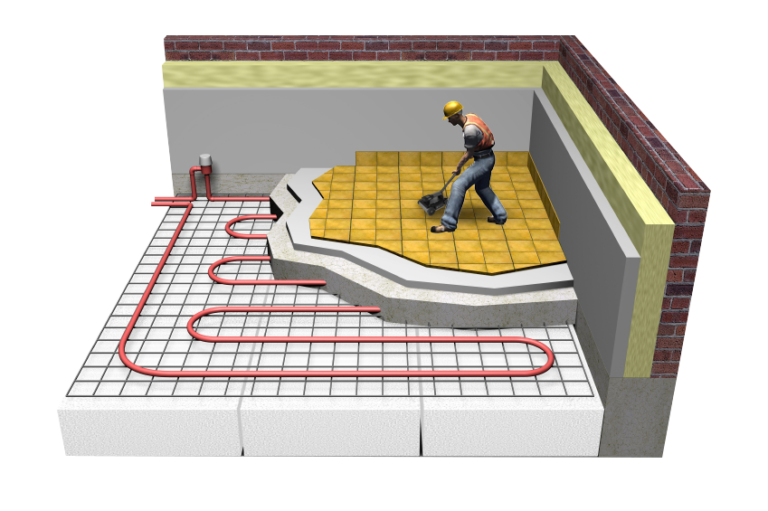Exploring the Secret Benefits of Concrete Scanning in Building And Construction Projects
In the world of contemporary construction techniques, the use of concrete scanning technology has arised as a critical device for making certain task effectiveness and structural stability. From improving safety and security measures to precisely spotting utilities concealed beneath the surface, the benefits of concrete scanning are complex. RainierGPR Concrete Scanning.
Improved Precaution
Using advanced concrete scanning modern technology enhances security procedures on building sites by giving accurate discovery of potential threats concealed below the surface. This innovation makes it possible for building and construction groups to determine rebar, conduits, post-tension cords, and other blockages before excavation or boring, dramatically reducing the danger of mishaps. By determining these aspects exactly, workers can prevent harmful crucial architectural elements, hence protecting against injuries, hold-ups, and costly repair work.
Moreover, concrete scanning plays a vital function in guaranteeing the honesty of existing frameworks during growths or improvements. By identifying weaknesses, spaces, or damage within concrete aspects, designers can deal with these concerns proactively, boosting the total security and longevity of the structure. This positive strategy not only reduces the threat of structural failings yet additionally lessens the possibility for accidents brought on by unanticipated structural deficiencies.
Fundamentally, the execution of concrete scanning modern technology serves as a proactive precaution that safeguards both building workers and the structural honesty of structures, eventually contributing to the general success and performance of building and construction jobs. - RainierGPR Concrete Scanning
Accurate Detection of Utilities
Concrete scanning technology promotes specific identification of below ground utilities, enhancing construction site security and efficiency. Accurate discovery of utilities is important in building projects to stop expensive damages, job hold-ups, and most importantly, make sure the safety and security of workers and the general public. By utilizing innovative scanning modern technologies such as ground-penetrating radar (GPR) and electromagnetic induction, construction groups can draw up the area of hidden pipes, wires, and various other energies with high levels of accuracy.

Time and Price Performance
Concrete scanning modern technology makes it possible for building and construction groups to precisely situate rebar, post-tension wires, and other embedded items within concrete frameworks. This exact details helps in preventing costly mistakes such as unintentional damages to vital elements throughout exploration, cutting, or coring tasks. Additionally, by identifying possible threats beforehand, the demand for costly repairs or revamp because of problems can be reduced, leading to cost financial savings for the job.

Furthermore, the capability to quickly and accurately detect energies underneath the surface without causing any type of damage not just saves time yet likewise prevents expensive interruptions to existing framework. Overall, the time and cost effectiveness advantages of concrete scanning make it an invaluable tool for enhancing building and construction project management and implementation.
Preservation of Architectural Integrity
Preserving the structural integrity of buildings and framework is vital in making sure long-term stability and safety. Concrete scanning plays an important duty in this conservation process by allowing building and construction experts to recognize possible hazards to the structural integrity of a structure read the article or framework prior to they escalate right into significant issues. With making use of advanced scanning innovations such as ground-penetrating radar (GPR) and electromagnetic induction, building teams can non-invasively assess the problem of concrete frameworks, find rebar, post-tension cords, and other ingrained components, and identify any type of spaces, splits, or degeneration within the concrete.
Improved Project Planning
In order to make sure the successful execution of construction tasks, thorough interest to detail and thorough preparation are necessary components that stem from a detailed understanding of the architectural conditions identified through concrete scanning. Inevitably, integrating concrete scanning into the project planning stage enhances sychronisation among group participants, fosters proactive analytical, and adds to the effective shipment of building and construction tasks within spending plan and timetable restrictions.
Conclusion
In final thought, concrete scanning offers many advantages in construction tasks. By boosting safety and security steps, accurately finding utilities, enhancing time and price effectiveness, protecting architectural integrity, and assisting in project preparation, concrete scanning confirms to be an important tool for successful project implementation. Its capacity to mitigate risks, raise performance, and Get More Info make certain job honesty makes it an essential asset for construction professionals.
In the realm of contemporary building practices, the use of concrete scanning technology has actually emerged as a critical tool for guaranteeing task efficiency and structural stability.Concrete scanning technology enables building and construction teams to accurately find rebar, post-tension cords, and other ingrained objects within concrete structures. Via the usage of sophisticated scanning innovations such as ground-penetrating radar (GPR) and electro-magnetic induction, building groups can non-invasively assess the condition of concrete frameworks, locate rebar, post-tension cable televisions, and other embedded components, and determine any type of gaps, cracks, or degeneration within the concrete.
In order to make sure the successful implementation of building tasks, thorough interest to information and extensive preparation are important elements that stem from a thorough understanding of the structural problems identified through concrete scanning. Ultimately, integrating concrete scanning right into the job planning stage improves control among team participants, cultivates positive analytical, and adds to the effective distribution of building and construction tasks within spending plan and schedule restraints.